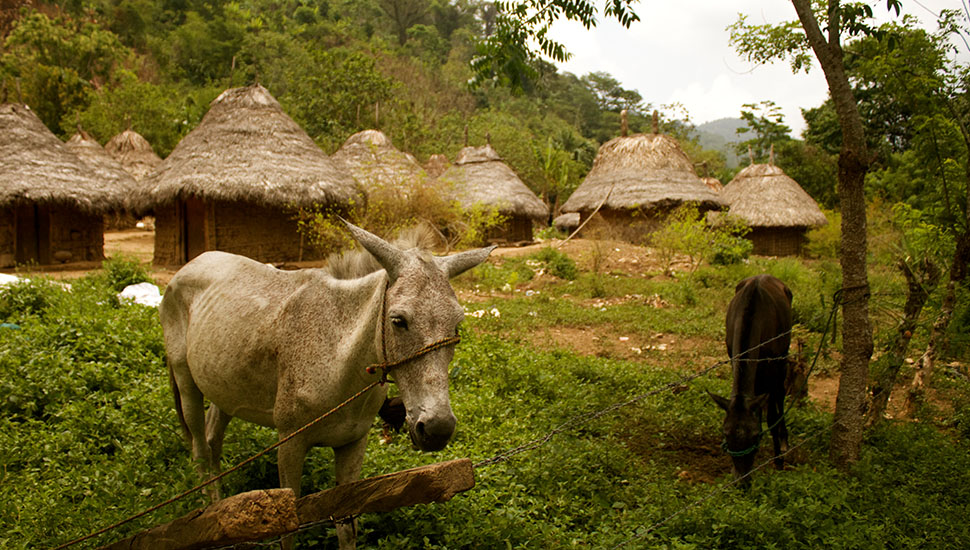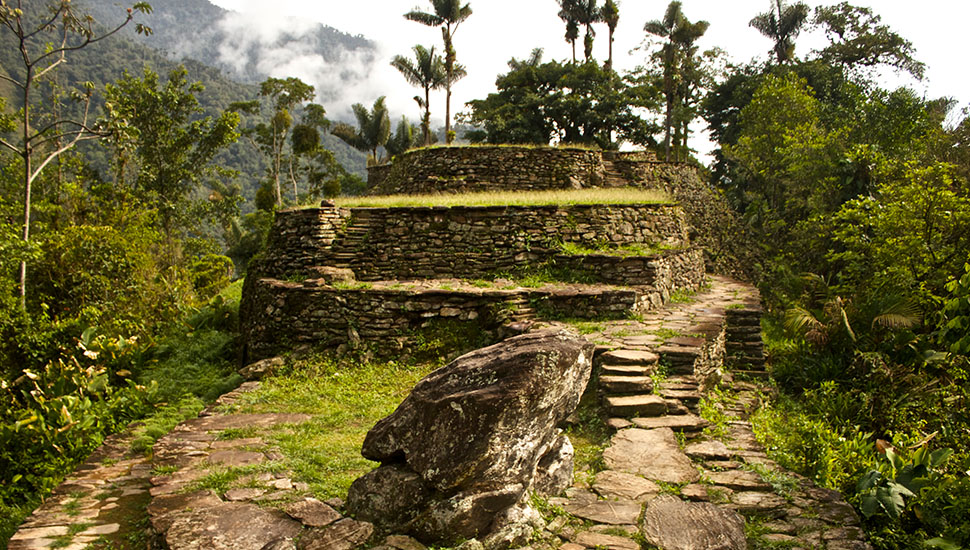Exploring Colombia's Lost City: A Gruelling Four-Day Hike
Colombia's reputation as a tourist destination has improved considerably in recent years, as various peace deals and initiatives have been put in place to counteract threats from terrorism and drug trafficking.
One of the most popular and tranquil attractions in this jungle-clad Central American country is the Lost City - a unique set of 1400-year-old ruins hidden deep in the rainforest.
In order to reach the Lost City, you must join a trekking group with a local guide.
The starting point is Santa Marta, a pretty coastal town blessed with long sandy beaches. Trekkers often enjoy a little quality beach time before and/or after their jungle adventure. It's common for visitors to plant a Ceiba sapling - and make a wish on it - before their trek.
What is the Lost City?
The Lost City was built in the 7th century by the Tairona tribe. Sadly, they were completely wiped out by the Spanish conquistadors in their quest for the gold of Eldorado. By the 16th century, the city was abandoned and became overgrown. It was rediscovered several hundred years later, in the 1970s. Today, the Tairona tribe's descendants, the indigenous Kogi, view the city as sacred. As such, access is strictly controlled.
Day 1
Lost City guides and travel agencies say anyone can complete the 52km, four-day trek - but in reality a certain degree of fitness is required. Slower walkers may find it tricky to keep up if the group consists of younger, fitter visitors. The start point, El Mamey, is reached after a bone-jangling 4x4 ride. The trek kicks off with a sharp climb, with humidity increasing steadily.
Trekkers can expect to see local Kogi women wearing traditional white smocks, often riding a mule.
The first camp is set by a cool river, with adjacent pools - perfect for plunging into, washing and relaxing in. Food usually consists of a simple Bandeja Paisa (rice, beans, pork rind, fried egg and avocado), while accommodation takes the form of bunk beds covered in mosquito nets.
Day 2

Most trekkers find the second day most grueling, as they rise higher and see the cultivated land give way to thick, verdant jungle.
Climbers will encounter many tribal women and children, who often come out of their huts to smile and wave. Pigs snuffle in the long grass. The menfolk are likely to be out hunting.
After camp is reached, the night is once again filled with the sound of cicadas, crickets, toads and birds.
Day 3

Trekkers breakfast early then begin ascending the 1,200 moss-covered steps that lead to the Lost City. Mornings are often misty, adding to the atmosphere. Climbers are likely to see government troops around the entrance - as an extra security precaution.
In contrast to Machu Picchu, the buildings of the Lost City were made of wood, so only the stone foundations have survived. The city is laid out across a number of concentric circles and terraces, connected by wide pathways. Around 4,000 people are believed to have lived here in its heyday.
But this amazing 30-hectare area may not be alone in the rainforest: other lost settlements are thought to exist under the thick canopies, where little light penetrates.
Visitors have several hours to relax on the terraces of the Lost City, surrounded by the sounds of a nearby waterfall and the vocal bird life. The occasional gunshot may ring out - from Kogi hunters.
The return trek then begins - easier than the ascendance but still tough-going.
Day 4
Having retraced their steps, trekkers return to El Mamey before sunfall. Resting their weary legs over a glass of cool beer, adventurers discuss their incredible experience in the Lost City, as the cicadas and toads begin their nightly song.
Get a Quote